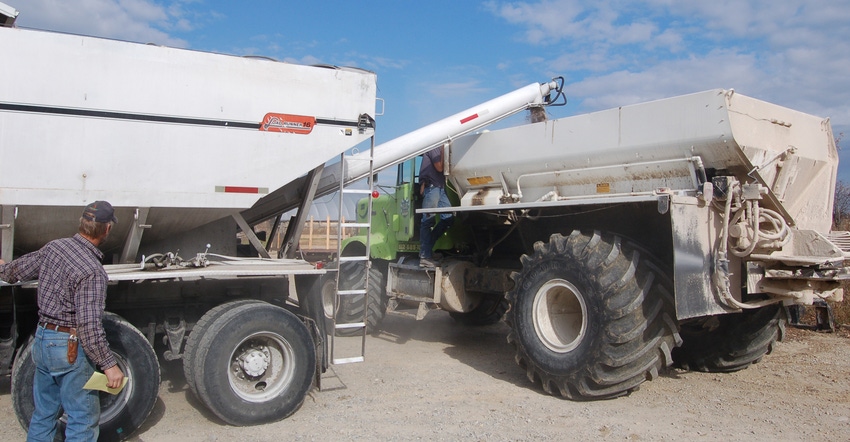October 3, 2018

We usually don’t spread phosphorus and potassium after corn for beans the next year. I’m wanting to cut back on broadcast applications anyway to save money. But my son wants to fertilize some in front of beans, going for higher soybean yields. That costs more money. Who has the best strategy?
The Indiana certified crop adviser panel answering this question includes Betsy Bower, agronomist, Ceres Solutions, Lafayette; Steve Gauck, sales agronomist, Beck’s, Greensburg; and Dan Ritter, agronomist, Dairyland Seed, Wabash.
Bower: Your son has the best strategy for fertilizing crops. Applying for each individual crop based on soil test results and yield goal is best yield-wise for both crops, year in and year out. It’s an extra application cost, but you do optimize the needed rate of P and K for each crop. We’ve learned over the past 10 to 15 years that if you provide needed crop nutrition regarding both P and K, with more importance to K, soybeans will reward you in improved yield. Beans remove a lot of K in grain. Tissue tests reveal during pod fill that typically K is the most limiting nutrient, followed by magnesium.
If you’re trying to reduce costs, look at each field individually. If you have soil test levels in the high end of the maintenance range, you may be able to reduce application rates or even skip a year. The advantage of building soil test levels is that you can safely reduce rates or skip a year with little impact on yield. If soil test levels are low and below optimum levels, skipping a crop nutrient would not be in your best interest. The return on investment when soil test levels are low is very good.
We’re also learning that in-crop applications that occur after the crop has emerged are a good way to layer nutrition in some soil types, particularly sandy and low organic-matter silt loams. You need access to high-clearance application equipment with row crop tires for this application.
Gauck: The challenge over the last few years is that we’ve been taking large corn yields off fields and not replacing that fertilizer before soybean planting. Soybeans yields may lag behind in the future if this trend continues. I feel like you can move some fertilizer to in front of soybeans and see a yield response, especially potash. If you start looking at fertilizer needs and what you’re applying, a two-year application in front of corn program leaves most soybean fields to scavenge for whatever is left. If you want to increase soybean yields, I would look at applying fertilizer before soybeans. Increased yield will more than offset the cost.
Ritter: Both options have merit. However, I will say it seems we treat soybeans as a secondary crop by not intentionally managing them. The advantage of fertilizing each year is that you have more complete information based on crop removal from the previous corn crop. This will allow you to fertilize specifically for the planned soybean crop. Based on previous crop removal, it could actually save you money. In other years it may cost more, based on data collected. Keep in mind, it could fluctuate year to year but will be more exact in what is needed for your crop.
You May Also Like




